Are Wolf Professional Ranges Worth It in 2025?
May 23rd, 2025 | 16 min. read
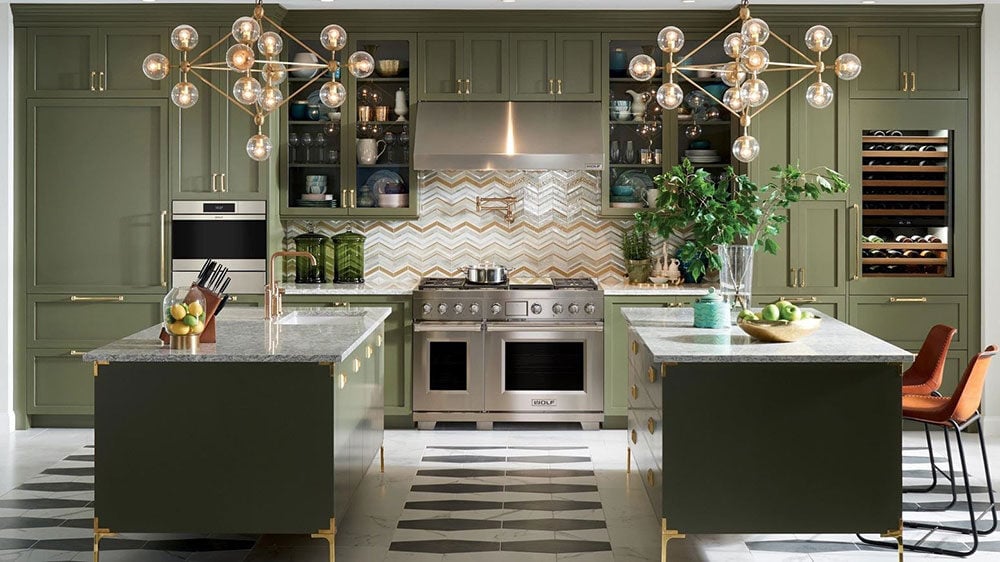
It’s been 25 years since Sub-Zero bought Wolf and reengineered their entire cooking line.
But with every major competitor updating their features for 2025, you may be wondering:
Is Wolf still your best choice, or is it a brand just riding on its reputation?
In this review, we’ll cover what’s changed, what hasn’t, and how Wolf stacks up to brands like Thermador, Miele, BlueStar, Monogram, and SKS. You’ll also get a closer look at:
- The difference between dual fuel and all-gas Wolf ranges
- Smart features, simmer output, and infrared grilling
- Why Wolf’s after-sale service may be a differentiator
- And what makes Wolf such a viable option
🔍Note: If you're interested in Wolf’s new 48-inch induction pro range, check out our 2025 Wolf Induction Range Review for a full breakdown.
Let’s get into it.
📌Skip Ahead:
- Is It Still Worth Buying?
- Brand Overview
- Range Types and Models
- Key Features
- How It Compares
- Final Verdict
Is Wolf Worth It in 2025?
About to drop anywhere from eight thousand to over twenty thousand on a luxury range. And Wolf, the name you keep hearing, may be your safest choice, or is it overpriced? This video, I'll break down what Wolf gets right, where it falls short, and how it stacks up against Thermador Miele, BlueStar monogram, and s gas and dual fuel and all gas so you don't make a five figure mistake. First, the basics. Wolf ranges come in four sizes, thirty, thirty six, forty eight, and sixty inches, all available in all gas or dual fuel. Thirty inch is your standard setup, one oven, four burners. At thirty six inch, you get a larger oven and the option to add a grill or griddle. Except at forty eight, you'll get a second oven, plus you get different options like infrared grill, griddle, French top, and for instance, you get a double grill or grill. And at sixty inch, you get two full size ovens, room for up to ten cooking options. Okay. This needs to be explained because for Wolf, more than any other brand, their gas and dual fuel ranges are almost completely different. So in this part of the video, we're gonna explain some of those differences. Then we'll tell you what they have in common. Finally, we'll compare other brands to both Wolf and dual fuel and all gas. You probably heard dual fuel is better and sometimes it is, but it really depends on what and how you cook. Dual fuel gives you a dry electric oven, which is good for baking. All gas is a moisture oven, which is better for roasting. Boilers are a major difference too. The dual fuel version is an electric boiler, which is slower and less intense than the gas range, which has an eighteen thousand b two infrared boiler. One more thing, dual fuel costs about fifteen percent more, needs a fifty amp line if you're replacing, whereas gas plugs into a a standard one twenty volt. Now let's look at all aspects of these ranges. In all gas models, Wolf burners max out at fifteen thousand BTU with one center burner at ninety two hundred. Do feel you get more output up to twenty thousand BTUs plus higher output across the cooktop. Controls are day and night. Gas models had just knobs. No time, no clock, no screen. Dual fuel adds a seven inch touchscreen with wolf gourmet guided cooking. You pick the food, pick how you like it. It sets temperature time and even rack position automatically. You also get Wi Fi and app control so you can start dinner before you even get home. Dual fuel gives you the vertical convection, two fans, extended elements, vertical heating, and even results on multiple racks. Gas models have single fan convection. Works fine, but less consistent. If you want self cleaning, you only have it available in dual fuel. Need to clean your gas oven on your own. These are signature features for both fuel types. Cimmer control is one of Wolf's biggest strengths. Thanks to dual stack burners, every burner was low heat consistently. Other brands usually give you two low burners, and they cycle on and off. You get an infrared grill and griddle, which is hotter and faster than standard grill options and easier clean. Infrared also means better searing as well. With the fridge top, it heats from the center out, so you move pots to control the temperature. It's ideal for sauces and staging multiple dishes. Now let's compare Wolf to its main competitors in all gas dual fuel because you now know these are very different ranges, and their strengths vary depending on how you cook. In all gas, Blue Star has up to twenty five thousand BTUs, the most powerful burgers on the market, but no true simmer control. Now you have an all gas grill and griddle. It's not infrared, so you get less searing power and it's harder to clean. Like Wolf, it's single convection. However, BlueStar's European convection, so it blows from the back of the stove for even more even temperature. You do have sizes twenty four to sixty inch on a BlueStar and over a thousand colors and six trim options. Miele's up to nineteen thousand five hundred BTUs, and it's a rare twin convection in all gas oven. It's the most cleanable with self cleaning oven and dishwasher safe racks. There's a time on clock, no touch screen, and you do get an infrared grill or grill option. Thermador's got up to twenty two thousand BTU in one burner with extra low simmer on two burners. Self cleaning with a built in timer, there is no grill option on a Thermador gas range. This gets a twenty three thousand BTU and two ultra low simmer burners. It's Wi Fi enabled smart knobs and an infrared boiler, but no cooktop customization. For dual fuel BlueStar, you get the new x eight burners that go up to twenty five thousand BTUs, but they're sealed unlike the open and all gas. Still no true simmer, but massive outlet plate. This one does include a seven inch touch screen. No self cleaning, no steam, no smart connectivity unlike Wolf. No guided cooking as well. It only offers all burners or does give you a griddle option as well. Miele is still up to nineteen thousand five hundred BTUs with the m touch smart controls and steam assist for baking. So it's got great controls along with dual convection self cleaning and a wireless probe. The forty eight inch includes a speed oven and warming drawer. This is unique only to Miele. You still get the infrared grill and grill option. Thermal is twenty two thousand b twos with actual simmer and select burners, but it's only single convection. Their forty eight and sixty inch ranges include a steam oven and built in induction burner creating a hybrid setup. SKS offers twenty three thousand BTUs with two ultra low simmer burners, only range with gas, induction, and sous vide in one cooktop. Includes a steam combi oven, convection oven, and a touch screen interface with smart app control. So here's the bottom line. Wolf is a decent all around range, especially in dual fuel. It's not the most powerful, doesn't offer steam, speed, or sous vide, but it's consistent user friendly, and has great post sales support, which trust me, matters more than you think. But here's one thing all these brands have in common. They'll all need service eventually. Wolf is traditionally decent. For the rest, check reviews in your area. Click the link to download our free cooking buying guide. We all know someone who's been talked in buying the wrong pro range. Don't let that happen to you. Over one million people found the right answers in the Yale guide. Thanks for watching.
Yes, if steady simmer control and dependable support matter more than flashy extras, Wolf still earns its keep.
Why Wolf Still Wins
- Reliable simmer on every burner thanks to a dual‑stack design
- Infrared broiler that sears steaks in minutes
- VertiFlow dual‑fan convection for even heat on three racks
- Wolf Gourmet presets that automate temp and timing
- Well‑supported service network for parts and repairs
Cost Caveats
- Dual‑fuel models run about 15 % higher in price than all‑gas
- Dual‑fuel ranges require a 50‑amp line (possible electrician fee)
- Only three finishes (stainless, black, white) and no custom colors
If you want built‑in sous‑vide, steam ovens, or a rainbow of colors, another brand may fit better.
But if you need a straightforward, high‑performance range backed by proven support, Wolf remains a solid choice in 2025.
Keep reading for a deeper dive into fuel types, standout features, and head-to-head comparisons with Thermador, Miele, BlueStar, and other leading brands.
Wolf Appliances: Brand Overview

Wolf is a family-owned American company based in Wisconsin, and while the features are impressive, it’s what happens after you buy that really sets them apart.
Wolf’s service reputation is arguably the best among premium brands, especially here in the Boston area.
When something goes wrong (and in appliances, something eventually does), Wolf actually answers the phone, has the parts, and helps solve the problem.
If you're buying from a store without a service department, Wolf might be your safest bet in the luxury category.
The Uncomfortable Meeting
About 20 years ago, Wolf gathered their top dealers into a room, and instead of talking sales, they read aloud real customer complaints about service gone wrong.
The message from the CEO was simple: this has to change.
That kind of meeting stays with you. I’ve been in plenty of uncomfortable industry meetings, but that one was different because it was about the customer, not the bottom line.
And that’s the difference. In a category where every brand claims reliability, Wolf actually delivers when something breaks.

Like most family-owned companies, they take it personally when you’re unhappy. It’s like calling your baby ugly. They’ll do whatever it takes to make it right.
At Yale, we have our own service department, so we see firsthand how brands handle support.

Wolf consistently stands out. Not just for speed, but for how easy it is to get parts, technical help, and real solutions.
Wolf Professional Ranges
Sizes & Fuel Types
Wolf professional ranges are available in four main sizes: 30", 36", 48", and 60", in both dual fuel and all-gas configurations.

Choosing the right one depends on your layout, how often you cook, and how much space you need on the cooktop and in the oven.
- 30" and 36" are best for everyday cooking and smaller kitchens
- 48" adds a second oven and custom cooktop options like a griddle or French top
- 60" gives you two full-size ovens and up to ten cooking surfaces for serious entertaining
Differences Between 30-Inch and 36-Inch Wolf Pro Ranges

The difference between Wolf’s 30" and 36" ranges is all about cooktop space and oven capacity.
- The 30" model includes four burners and a single oven.
- The 36" model gives you a larger oven and options for six burners or four burners with a grill or griddle.
Read More: Best 36-Inch Professional Ranges
Differences Between 36-Inch and 48-Inch Wolf Pro Ranges

The 48" Wolf range is where things really open up - literally.
In addition to the main oven, you get a second, smaller oven, more burner capacity, and a wide range of cooktop configurations.
Here’s what’s possible at 48":
- Six burners with a grill or griddle
- Four burners with either a grill, griddle, or even a double-width 24-inch grill or griddle
- A French top option (dual fuel only)
- Or an all-burner configuration with 8 burners vs. 6
Read More: Best 48-Inch Professional Ranges
Differences Between 48-Inch and 60-Inch Wolf Pro Ranges

Key upgrades from the 48":
- Two full-size 30" ovens, instead of one full-size and one smaller oven
- More cooktop real estate with up to ten burners or combinations of grill, griddle, and French top
🔍Read More: Best 60-Inch Professional Ranges
Wolf All Gas vs. Dual Fuel Ranges: What’s the Better Choice?

You’ve probably been told that dual fuel is better, and in some cases, that’s true. But it depends on how (and what) you cook.
- Electric ovens (dual fuel) offer precise, dry heat, which is ideal for baking.
- Gas ovens are moister, which can be better for roasting meats.
- Gas broilers, especially Wolf’s infrared design, outperform most electric ones. (Fun fact: it’s the same sear burner found in $10,000 Lynx grills.)
There are also cost and installation differences:
- Gas ranges are about 15% less expensive and require only a standard 12-amp outlet.
- Dual fuel ranges need a 50-amp line and often require more planning.
So, should you choose dual fuel or gas? It comes down to two things:
- How you cook
- Whether the added features on the dual fuel model (which we’ll cover next) matter to you
🔍Read more: All Gas vs. Dual Fuel Ranges
Wolf Dual Fuel vs Gas: Detailed Feature Breakdown
Burner Output
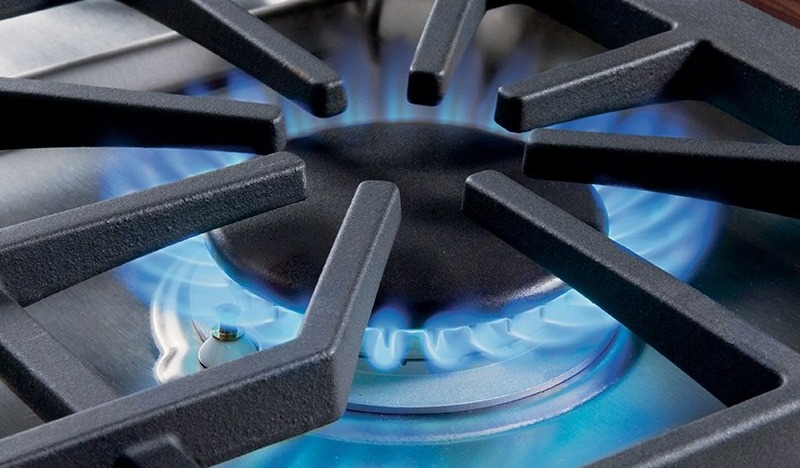
Burner power is one of the biggest differences between the gas and dual fuel models.
All-Gas: Most burners max out at 15,000 BTUs, with one simmer burner at 9,200 BTUs.
Dual Fuel (6-burner): More power across the board. One 20,000 BTU, two 18,000, two 15,000, and one 9,200 BTU burner.
Controls

The control systems are a night-and-day difference between the two.
- All-Gas: Classic, no-frills design - no clock, no timer, no touchscreen. Just knobs, like a restaurant range. That’s standard across brands like Thermador Pro Harmony and BlueStar.
- Dual Fuel: Fully modernized with a 7-inch touchscreen, Wolf Gourmet guided cooking, and LED-lit bezels that glow when the burners are on.
I have a Wolf and use the Gourmet feature myself (and no, you don’t need a culinary degree).
Here’s how it works:
- Select the type of food (e.g., roast chicken, lasagna, chocolate cake)
- Choose how you want it cooked (e.g., rare, medium, well-done)
- The oven automatically sets the temperature, time, and rack position
It’s one of the easiest smart cooking systems available Miele MasterChef would be the other), and it’s only found in Wolf’s dual fuel ranges.
Smart Functionality
Only the dual fuel models include Wi-Fi connectivity and app-based control.
With the Wolf app, you can:
- Preheat your oven remotely
- Adjust temperature or cooking mode from your phone
- Access over 50 preset recipes for guided cooking
- Receive notifications when cooking is complete
If you like the idea of starting dinner while you’re still at the office, this feature delivers.
Oven
.jpg?width=799&height=368&name=wolf-pro-range-oven-interior-(1).jpg)
There are two major differences in oven performance between Wolf’s gas and dual fuel models: convection and cleaning.
- All-Gas: Features a single convection fan and no self-cleaning option. It’s a reliable performer, but more manual.
- Dual Fuel: Adds Wolf’s advanced VertiFlow convection system (dual fans + vertical heating) for more even baking, and includes self-cleaning ovens in all sizes. The VertiFlow convection system is the most advanced convection system on the market
Second Oven

Both models offer a second oven in the 48" and 60" sizes, so you’ll still get double-oven flexibility either way.
Broiler Performance
If you care about broiling, this might be your deciding factor.
- The all-gas Wolf range uses an 18,000 BTU infrared broiler. It’s the same technology found in high-end outdoor grills. It delivers direct, high-intensity heat, ideal for steaks, chops, or that bubbling finish on lasagna.
- The dual fuel model uses an electric broiler, which isn’t nearly as fast or intense.
If broiling is a big part of your cooking style, the all-gas model has a clear advantage.
Fun Fact: My mom used to broil everything back in the day. She had a Caloric, one of the original infrared broilers. Unfortunately, infrareds can sear quickly and burn if left unattended.
So much so, my dad still eats everything well done, even his omelettes.
Price

Price is another key difference, and it’s not small.
On average, Wolf’s dual fuel ranges cost about 15% more than their all-gas counterparts.
That’s before considering installation:
- Dual fuel models require a 50-amp dedicated circuit.
- Gas models run on a standard 120V, 12-amp outlet.
So the total cost difference can grow depending on your electrical setup.
If you don’t need smart features, additional output, or electric ovens, all-gas might give you everything you want at a lower price.
Top Wolf Features: Simmer, Infrared, and Convection

Now that you have an idea of the differences between dual fuel and all gas, let’s look at Wolf's best features.
Wolf Simmer Performance
One of the most underrated Wolf features is their simmer control. It’s available on every burner.
Thanks to Wolf’s dual-stacked burner design (two flame ports instead of one), the flame stays consistent at low heat, rather than pulsing on and off like other brands.
That means you can melt chocolate or keep a sauce warm without scorching.
By comparison, brands like Thermador and SKS offer only two “extra-low” simmer burners. owever they cycle the flame, not maintain it steadily.
Wolf Infrared Grill

Wolf’s infrared grill is one of the most powerful cooktop options you can buy—and it’s built right into the range.
- Found on select 36", 48", and 60" models, this infrared burner reaches 16,000 BTUs (dual fuel) and delivers restaurant-level searing.
- It burns hotter and faster than standard gas grills, while also evaporating grease on contact, and making cleanup easier.
Pro Tip:
- On dual fuel models, the grill is temperature adjustable
- On all-gas, it runs at full blast, but Wolf includes a diffuser plate to tone down the heat when needed
Most competitors either skip the grill altogether or offer less effective gas-style versions. Gas diffuses the heat and requires more cleanup
This is one of Wolf’s strongest differentiators.
Wolf Infrared Griddle

Wolf’s infrared griddle is another standout feature, especially for anyone who loves breakfast or batch cooking.
- It’s available on 36", 48", and 60" ranges in both dual fuel and gas models.
- Heats faster and more evenly than traditional gas griddles.
- Delivers consistent temps across the surface (no hot spots or cold corners).
Like the grill:
- The dual fuel griddle is adjustable, giving you more control.
- The all-gas version is fixed at high, but still effective for pancakes, bacon, or burgers.
Cleanup is simple, too. Wolf’s griddle surface is nonstick and slightly pitched, so grease drains easily into the built-in trough.
Infrared will be a lot faster than electric griddles as well.
However, you do need to scrape it, unlike JennAir’s chromium finish griddle.
Wolf French Top

The French top is one of Wolf’s most unique and most misunderstood features. It’s available only on dual fuel 48" and 60" models.
Here’s how it works:
- A powerful central burner heats a thick, round plate of metal.
- The center is hottest, which is great for searing or boiling.
- The heat tapers off toward the edges, giving you multiple temperature zones in one surface.
You don’t cook directly on a French top like a griddle.
Instead, you use it with pots and pans, moving them closer or farther from the center depending on how much heat you need.
It’s incredibly versatile for sauces, sautéing, or keeping multiple dishes warm at once.
Only Wolf, BlueStar, and La Cornue offer a French top range.
VertiFlow Convection
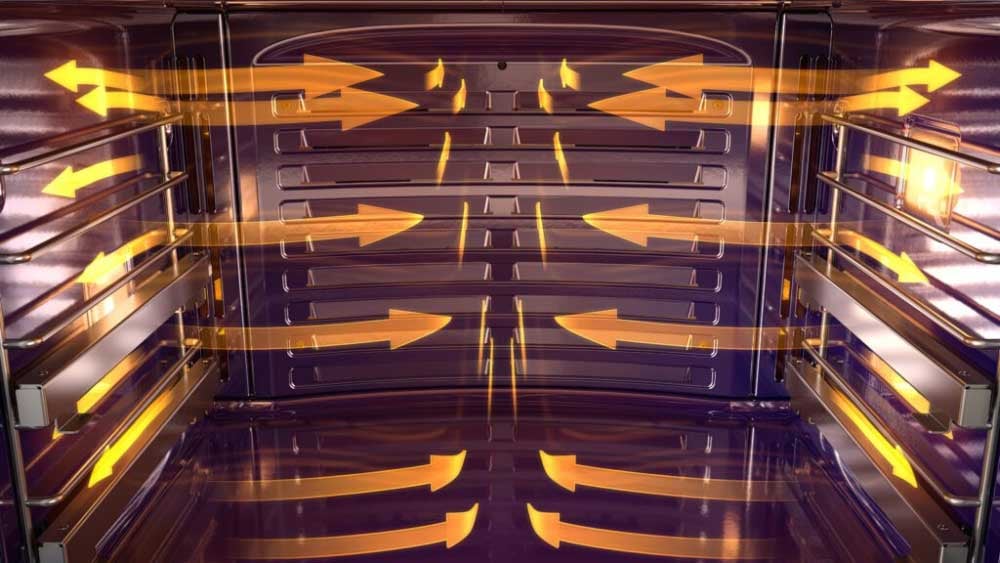
Wolf’s VertiFlow convection system is exclusive to their dual fuel ranges, and it’s one of the best convection designs on the market.
Here’s what makes it different:
- It uses two fans and vertical heating elements.
- This creates a more even airflow than standard rear-wall convection systems.
- Your cookies, roasts, and sheet-pan dinners cook more evenly, even on multiple racks.
On the all-gas models, you’ll still get convection, but it’s a single fan mounted on the back wall. It works, but it’s not as consistent or powerful as VertiFlow.
If you're a serious baker or someone who regularly cooks with multiple trays at once, dual fuel wins here.
Wolf vs. Top Competitors: Thermador, Miele, BlueStar, Monogram & SKS
| Wolf | Thermador | Miele | BlueStar | SKS | |
| Max Burner Output | 20,000 BTU (DF) | 22,000 BTU (DF) | 19,500 BTU | 25,000 BTU | 23,000 BTU |
| Smart Functionality | Dual Fuel Only | All models | Yes | No | Yes |
| Steam Oven Option | No | Yes, Pro Grand Series Only | Steam Assist | No | Yes |
| Sous Vide | No | No | No | No | Yes, built-in |
| Grill Type | Infrared (DF) | Electric or none | Infrared | Gas | None |
| Griddle Type | Infrared | Electric | Electric | Gas | Induction |
| French Top | Yes (DF Only) | No | No | Yes (Gas Only) | Induction |
| Simmer Capability | All burners (dual stack) | ExtraLow on 2–4 burners | Select burners | Manual (raise pot) | Precise Simmer |
| Convection System | VertiFlow (DF) | Single/Dual Fan | TwinFan | Single/Pure Convection | Dual Convection |
| Oven Broiler | Infrared (18,000 BTU) | Electric (lower power) | Electric | Infrared (gas) | Electric |
| Guided Cooking / Recipes | Yes (Wolf Gourmet) | Limited (via app) | Yes (M Touch) | No | Yes |
| Self-Cleaning Oven | Dual Fuel Only | Most Models | Yes | Dual Fuel Only | Yes |
| Colors Available | SS, White, Black | Stainless Only | Stainless Only | 1,000+ Custom Colors | Stainless Only |
| Warranty | 2 Years | 2 Years | 1 Year | 1 Year | 3 Years |
Wolf vs. Thermador: Best for Features or Cooking Power?

All-Gas Comparison
Burner Output:
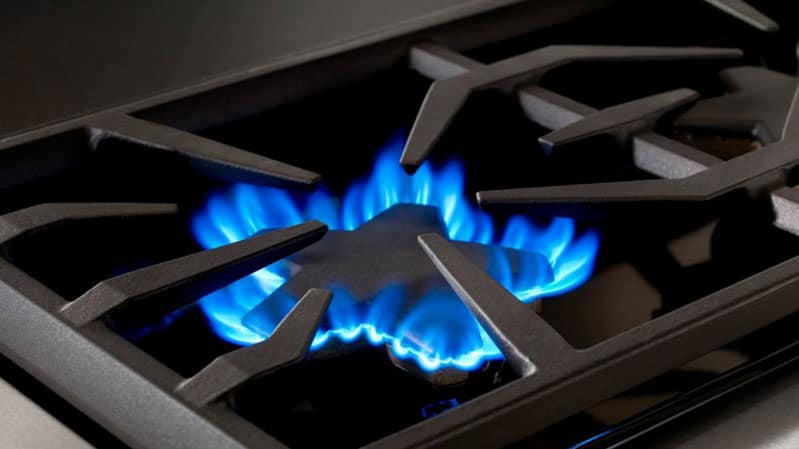
Thermador’s Pro Grand offers up to 22,000 BTUs, slightly more than Wolf’s 15,000 BTUs on all-gas models.
However, Wolf offers better simmering across all burners with its dual-stacked design.
Oven Features:

Thermador’s Pro Grand and Harmony both offer self-cleaning gas ovens, which Wolf lacks in the all-gas category.
Thermador also includes a temperature probe and clock/timer. Wolf keeps things stripped down and pro-style.
Cooktop Options:

Thermador no longer offers a grill, just an electric griddle.
Wolf provides infrared grill and griddle options in gas and dual fuel, with more precise performance.
Design Fit:
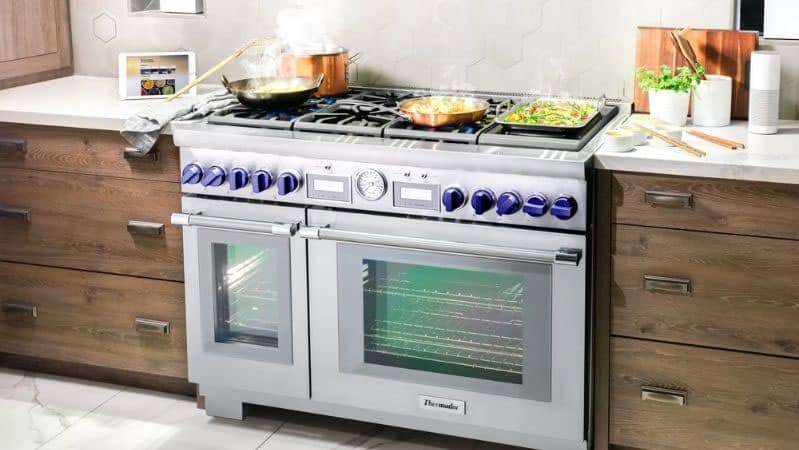
Thermador Pro Harmony sits flush with cabinetry, like Wolf.
The Pro Grand is deeper, which can be a deal breaker in tight layouts.
Dual Fuel Comparison
Burner Power:

Thermador still leads slightly with 22,000 BTUs, but Wolf’s top-end 20,000 BTU burner is close. Wolf also offers consistent simmer on all burners.
Thermador's ExtraLow simmer is available on just two to four burners, depending on the model.
Smart Features:
.jpg?width=799&height=449&name=Thermador-Home-Connect%20(1).jpg)
Thermador includes HomeConnect smart tech on all models.
Wolf limits smart functionality to dual fuel models only, but adds Wolf Gourmet guided cooking, which Thermador lacks.
Oven Performance:
.jpg?width=799&height=449&name=Thermador-Professional-Range-With-Steam-Oven%20(1).jpg)
Wolf uses the VertiFlow convection system with dual fans and vertical heating, a more advanced system than Thermador’s single-fan setup.
Thermador offers the option of a steam oven in its 48" and 60" Pro Grand ranges. Wolf does not.
Special Options:
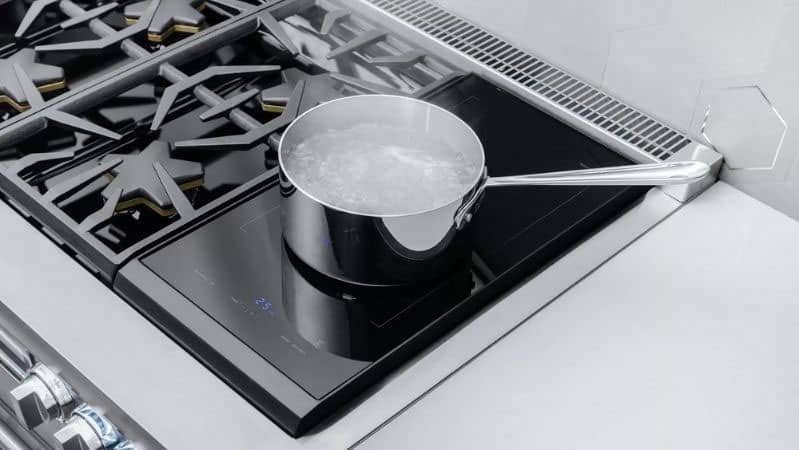
Thermador offers a built-in induction burner on the Pro Grand dual fuel range, making it a hybrid gas and induction unit. It’s great for tech-forward cooks.
Verdict
Choose Wolf if you want a range that is easy to use, with steady simmer performance on every burner and more even oven results.
The controls are simple, and the guided cooking helps without adding complexity.
Choose Thermador if you want stronger burners, more built-in features, and smart technology across all models.
You also get the option of steam or induction in larger sizes. Just check that the range fits your space.
Both are reliable. The right choice depends on whether you prefer simplicity or more features.
Wolf vs. Miele: Precision vs. Power

All-Gas Comparison
Burner Output:

Miele’s all-gas models offer up to 19,500 BTUs, higher than Wolf’s 15,000 BTUs in the same category.
However, Wolf wins on simmer control, offering better low-end control across all burners thanks to its dual-stack design.
Grill & Griddle:

Both brands use infrared technology for their grills and griddles, which is ideal for fast, even heat.
Miele provides temperature control even on gas models, which Wolf does not.
That’s a big plus if you're doing more than steak on the grill.
Cleaning & Controls:
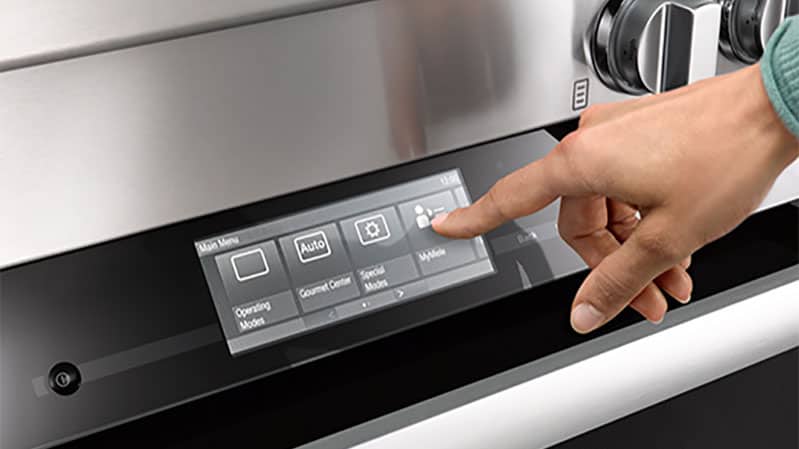
Miele offers self-cleaning ovens and dishwasher-safe grates and racks, even in all-gas models. Wolf does not.
Miele also includes clocks and timers, while Wolf’s gas models are intentionally minimal.
Sizes:
Miele’s all-gas line tops out at 36 inches. There are no 48- or 60-inch options available.
If you need larger sizes, Wolf wins by default.
Dual Fuel Comparison
Burner Output:
Miele’s max burner is 19,500 BTUs, just below Wolf’s 20,000 BTU top burner.
Wolf still leads on simmer control and consistency.
Smart Features & Automation:

Miele’s M Touch controls are sleek and phone-like. You can select food, doneness, and let the oven take over.
It also offers Steam Assist, which adds moisture to baking or roasting cycles (though it’s not a full steam oven). This feature is great for bread baking.
Wolf counters with Wolf Gourmet, its guided cooking system, and better convection performance via VertiFlow.
Extras:

Miele is the only brand with a wireless temperature probe, though similar accessories can be purchased separately.
Both brands offer dual convection, but Wolf’s vertical design delivers more even results.
Verdict
Choose Wolf if you want stronger burner performance, larger sizes, and better post-sale service.
Choose Miele if you love smart tech, easy cleaning, and want Steam Assist or the sleekest control interface in the business.
Wolf vs. BlueStar: Tradition vs. Customization

All-Gas Comparison
Burner Output:
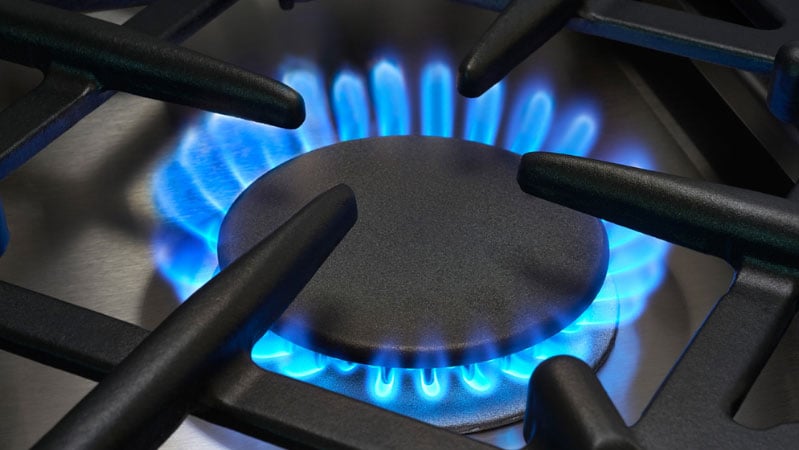
BlueStar brings the heat. Their Platinum Series offers 25,000 BTU burners, compared to Wolf’s 15,000 BTUs in gas models.
Wolf wins on simmer control. BlueStar doesn’t offer dual-stacked burners, so you have to move the pot away from the flame manually to reduce heat.
Grill & Griddle:
Wolf uses infrared for faster, more even heating and easier grease cleanup.
BlueStar uses standard gas burners that don’t get as hot and aren’t self-cleaning.
French Top:

Both brands offer French tops. BlueStar includes them only on gas models, while Wolf offers them on dual fuel models.
Wolf’s version is more controlled and better integrated into the cooktop layout.
Size Options:
BlueStar wins on variety, with sizes from 24 to 60 inches. Wolf starts at 30 inches.
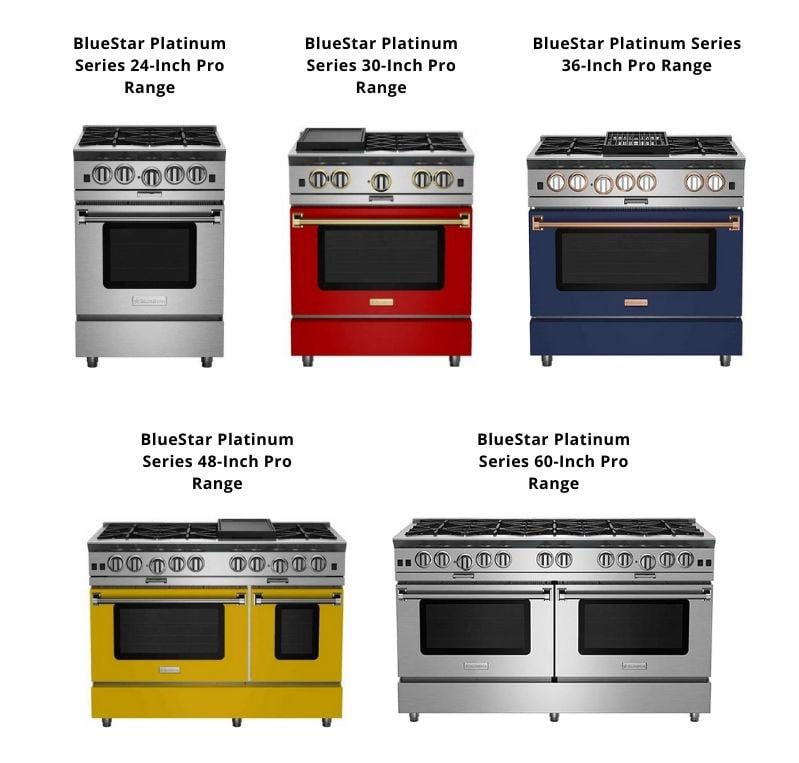
BlueStar also allows custom cooktop configurations, like grill plus griddle plus burners, offering more flexibility than Wolf’s standard layouts.
Colors & Customization:

BlueStar offers over 1,000 custom colors and 10 trim options. Wolf offers stainless, white, and black.
If style is as important to you as performance, BlueStar stands out.
Dual Fuel Comparison
Burner Output:
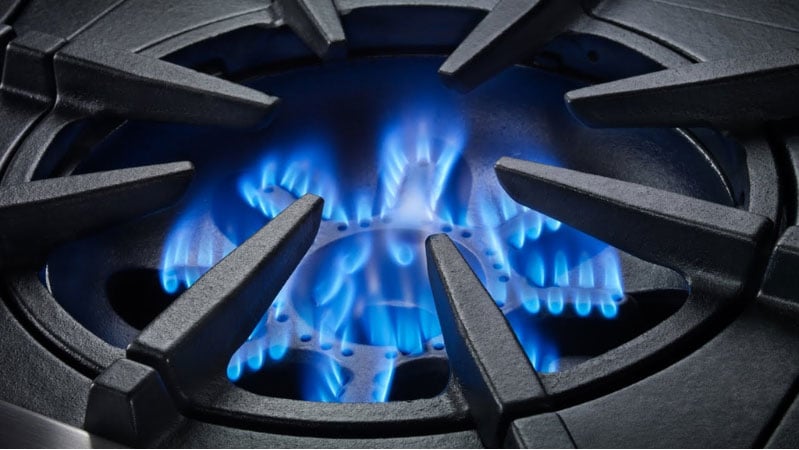
BlueStar’s X-8 burner reaches 25,000 BTUs, the highest in the dual fuel category.
Wolf tops out at 20,000 BTUs but still offers better control at low heat across all burners.
Guided Cooking & Smart Features:
Wolf includes smart functionality and Wolf Gourmet with over 50 guided recipes.
BlueStar offers no app, screen, or automation. It’s a fully manual experience.
Oven Convection:
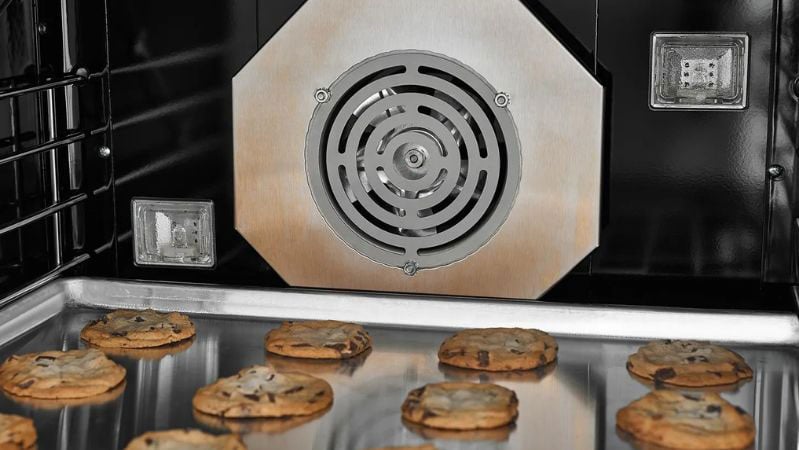
BlueStar uses a single rear convection fan. Wolf’s dual fuel models feature the VertiFlow system with vertical heating for improved airflow and even results.
Learning Curve:
BlueStar feels more like a restaurant range. It’s not beginner-friendly.
Wolf is easier to use day to day and has a gentler learning curve.
Verdict
Choose Wolf for reliable performance, great service, guided cooking, and straightforward usability.
Choose BlueStar if you want customization, raw power, and a commercial-grade look, and you’re comfortable with hands-on operation.
Final Takeaways
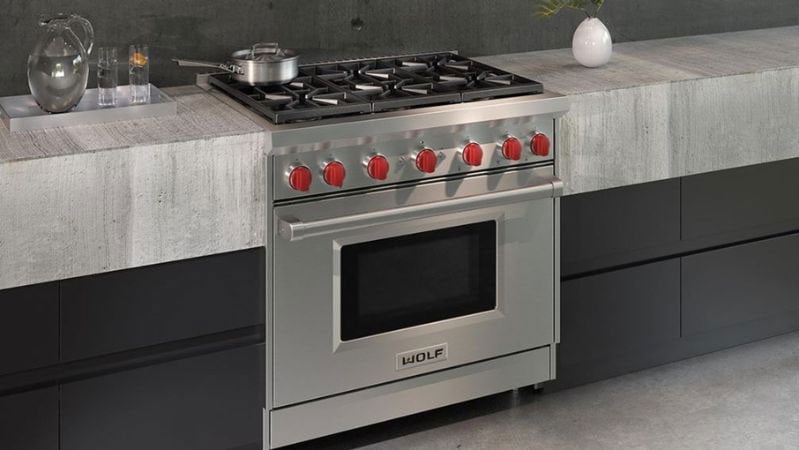
Wolf may not chase every trend - no steam ovens, no 1,000 color options - but if you cook often, need a consistent simmer, and want a brand that still answers the phone after the sale, it’s hard to beat.
Choose Wolf if you value predictable performance, a searing broiler, and service that fixes problems on the first visit.
Skip it if you want built-in sous-vide, custom colors, or the absolute highest BTU numbers.
Additional Resources
Get our free Pro Cooking Buying Guide for tips, trends, and reviews of all the best brands. Over 1 million people have already found answers in a Yale guide.
Related Articles:
Why Should You Trust Us?
It seems that every appliance review has nothing but glowing comments about almost every product, yet you read customer reviews and they are almost universally bad.
We are here to fill in the disconnect. We'll give you the best features, and the drawbacks as well, including reliability based on over 37,000 calls performed by our service team just last year. Our goal is to give you ALL the information so you know what's right for you.
Please consider subscribing or adding to the conversation in the comments below. We appreciate you stopping by.
Steve Sheinkopf is the third-generation CEO of Yale Appliance and a lifelong Bostonian. He has over 38 years of experience in the appliance industry, and he is a trusted source of information for consumers on how to buy and repair appliances.
Steve has also been featured in numerous publications, including the
New York Times,
Consumer Reports,
The Boston Globe,
Bloomberg Radio, the
New York Post,
The Wall Street Journal, and
Entrepreneur, for his knowledge of how to buy appliances and appliance repair.
Steve is passionate about helping consumers find the best appliances for their needs, and he is always happy to answer questions and provide advice. He is a valuable resource for consumers who are looking for information on appliance buying, repair, and maintenance.
Despite being the worst goalie in history, Steve is a fan of the Bruins and college hockey, loves to read, and is a Peloton biker. The love of his life is his daughter, Sophie.
A Note About Pricing
Pricing on this blog is for reference only and may include time sensitive rebates. We make every attempt to provide accurate pricing at time of publishing. Please call the stores for most accurate price.
Topics:



